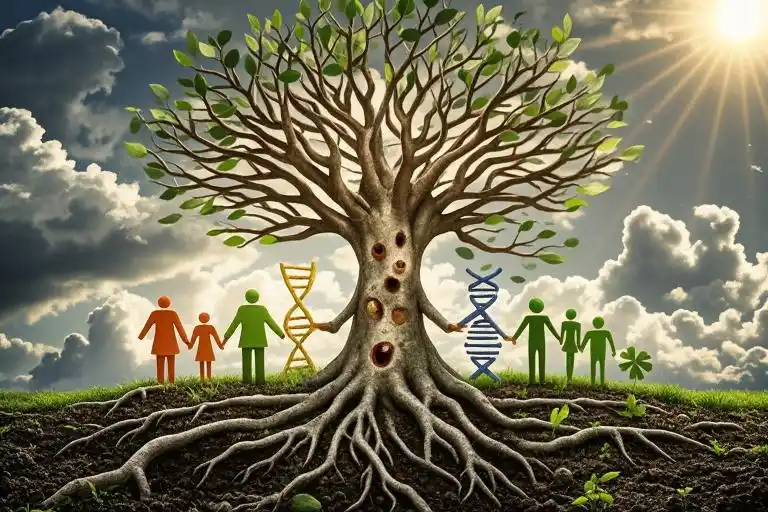The coffee in my office mug had gone cold—again. Across from me, a college student named Sarah nervously twisted her sleeve, recounting how a “traumatic grocery store trip” left her trembling for days. Her therapist had diagnosed her with “subclinical PTSD,” though no actual danger had occurred. As a clinical psychologist with three decades of experience, I felt a familiar unease. We’d made extraordinary progress in trauma treatment, yet somewhere along the way, our cultural lens narrowed until every human struggle became a sequel to catastrophe.
When Healing Became a Double-Edged Sword
Let’s start with the triumph: modern trauma therapy saves lives. Groundbreaking treatments like EMDR and somatic experiencing help war veterans stop reliving mortar explosions, allow abuse survivors to trust again, and empower accident victims to drive past crash sites without panic attacks. The science is clear—unprocessed trauma physically alters brain structures like the amygdala, trapping people in survival mode.
But here’s what no one tells you at mental health conferences: Our trauma-focused world is accidentally teaching people to conflate stress with existential threat. A 2023 Johns Hopkins study found that 62% of Gen Z now self-identify as “traumatized,” often citing experiences like public speaking anxiety or romantic rejections. While their pain is real, framing these events through a trauma lens risks turning temporary distress into a permanent identity.
The Victimhood Trap
I’ll never forget David, a gifted engineer who entered therapy after a workplace error. His previous counselor had spent months excavating childhood memories of his strict piano teacher. “I realized I’ve been traumatized since age seven,” he declared. Yet our sessions revealed a different story—David’s perfectionism stemmed not from trauma, but from his immigrant parents’ cultural emphasis on achievement. By narrowly focusing on past wounds, we’d overlooked his present need for self-compassion skills.
This pattern plays out everywhere:
- Schools labeling shy students as “trauma survivors” instead of teaching social skills
- Politicians weaponizing collective trauma narratives to justify hostility
- Social media trends where “#TraumaDumping” replaces genuine connection
Like carrying an umbrella during a drizzle only to get struck by lightning, our hypervigilance for past threats blinds us to present solutions.
The Missing Pieces in Our Trauma Puzzle
Neuroscientist Dr. Maya Patel puts it brilliantly: “Trauma therapy is the flashlight we use in dark rooms—indispensable, but useless if we refuse to turn on the overhead lights.” Here’s what often gets overshadowed:
1. The Resilience Factor
Our brains aren’t passive trauma recorders—they’re meaning-making machines. Two people might experience identical accidents: One develops PTSD, while the other channels their experience into founding a safety nonprofit. Key differences?
- Genetic variations in stress response systems
- Access to community support post-event
- Pre-existing coping skills
A 2022 meta-analysis in Nature Mental Health showed that resilience-building interventions (mindfulness, problem-solving training) often outperform trauma processing alone for mild-to-moderate distress.
2. The Context Crisis
Consider these two patients:
- Case A: A woman develops panic attacks after surviving a mass shooting
- Case B: A man experiences identical symptoms after his stable corporate job gets automated away
While Case A clearly needs trauma-focused care, Case B’s anguish stems from modern society’s erosion of job security—a systemic issue requiring different interventions. Yet our current diagnostic systems might pathologize both as PTSD.
3. The Body’s Silent Stories
Trauma isn’t just psychological—it’s physiological. But fixating on emotional wounds sometimes means missing:
- Nutritional deficiencies exacerbating mood disorders (e.g., omega-3s for brain health)
- Circadian rhythm disruptions mimicking anxiety symptoms
- Chronic inflammation linked to depression
Integrative clinics now combine talk therapy with functional medicine testing, often discovering root causes that trauma narratives alone couldn’t explain.
Charting a Middle Path: Three Strategies for Balanced Healing
1. The “Yes, And…” Approach
Instead of either trauma or other factors, adopt a both/and perspective:
- “Yes, your childhood experiences matter, and let’s explore how current sleep habits affect your mood”
- “Yes, systemic racism causes trauma, and let’s discuss boundary-setting skills for workplace microaggressions”
Therapist Elena Gomez uses cooking metaphors with clients: “Trauma is the salt in your stew—essential to acknowledge, but the meal needs other ingredients too.”
2. Redefining Safety
Rather than just processing past dangers, help clients build present-day security:
- Financial literacy workshops to reduce economic anxiety
- Nature exposure to regulate nervous systems
- Relationship skill-building to create reliable support networks
A rehab center in Colorado reduced relapse rates by 40% after adding woodworking classes—clients reported feeling “capable” rather than “broken.”
3. Cultural Humility in Care
Acknowledge that:
- Some cultures view adversity as character-building rather than traumatic
- Western trauma models may pathologize normal grief processes
- Collective healing practices (community rituals, ancestral wisdom) often get overlooked
As psychologist Dr. Rajiv Mehra notes: “We must stop prescribing emotional bandaids where societal surgery is needed.”
The Way Forward: Expanding Our Toolkit
The future of mental health isn’t about abandoning trauma care—it’s about refusing to let it monopolize the conversation. Emerging solutions include:
- AI-assisted differential diagnosis analyzing 200+ biopsychosocial factors
- Community resilience hubs combining therapy with job training and legal aid
- Psychedelic-assisted therapies that help reframe traumatic memories without retraumatization
Like gardeners who know when to prune and when to fertilize, mental health professionals must cultivate discernment. Trauma will always be part of our story—but it doesn’t have to be the entire book.


